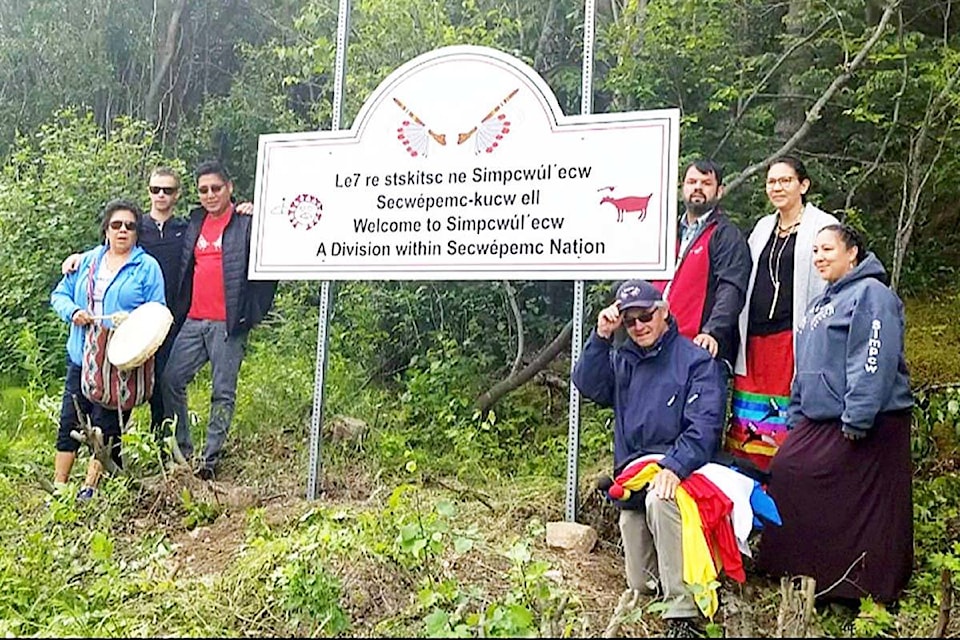By Stephanie Hagenaars
The District of Clearwater Forestry Working Group hosted a “value-added/forestry utilization workshop” on Saturday to continue discussions from a meeting in August 2019, and brainstorm opportunities to diversify the town’s economy.
Roughly 50 people attended the six-hour workshop, consisting of locals, government employees and displaced forestry workers. Speakers included John Drew from Woodco, Toby Jeffreys from Gilbert Smith and Mayor of Quesnel, Bob Simpson.
Advice from Quesnel
After a brief welcome from Mayor Merlin Blackwell and Chief Shelly Loring of Simpcw First Nation, Quesnel’s mayor, Bob Simpson, spoke about his town’s challenges with the forest industry decline over the years.
Examples included shifting tax rates more evenly among industrial and residential, creating the Future of Forestry Think Tank and identifying other local manufacturing industries to break into such as biocomposites and modular home construction.
The decline of the forest industry as we know it today is no surprise, said Simpson. Back in 2005, his first year as an MLA, Simpson suggested an all-party committee “to get ahead of what we’re experiencing now.”
Even though the future of British Columbia’s forestry industry seems bleak, Simpson said he believes “with (his) heart and soul” that the industry can be repurposed and reinvented.
Some of those opportunities, he continued, come from the operations that are already happening in the region and finding ways to expand the use of various materials. For example, a local pulp mill produces dissolving pulp that can be used for biocomposites.
But, before he got into the nitty-gritty, Simpson stressed that the opportunities in Quesnel are not a blanket fix.
“Each of the communities has their own challenges, their own opportunities, their own flavour of how they’re going to get through this,” he said.
“There are no magic bullets. There’s no quick fixes. This has been a long burn.”
Simpcw Cultural Heritage
Chief Shelly Loring followed, speaking to the group about the referral and consultative process with the Simpcw First Nation.
Simpcw receives hundreds of referrals, said Loring. The Canfor and Interfor transaction, as well as a mutual benefit agreement with Trans Mountain Pipeline, are examples of the referral and consultative program at work.
In addition, said Loring, Simpcw’s heritage and archaeological monitoring program have found various artifacts as a part of their cultural heritage policy, including an alpine village site near the newly discovered “Star Wars” cave in Wells Gray.
Loring described many aspects that cultural heritage encompasses, such as hunting sites, fisheries and trail systems, as well as foods, medicines and wetlands.
“We have probably over a hundred different medicines that we collect from specific wetland sites, specific hydrological sites, that are key to our people,” she said.
Because of the high number of mutual benefit agreements, Simpcw First Nation created Simpcw Resources LLP in an effort to ensure any future lawsuits that may stem from the agreements would not affect the funding sources that come in for the Simpcw people.
Loring also noted Simpcw First Nation is looking into obtaining the resources to have teams monitor various operations to ensure work is conducted in line with agreed-upon recommendations.
Clearwater’s Community Forest
George Brcko, general manager of the Wells Gray Community Forest (WGCF), spoke in the afternoon, providing information to the group about how the community forest runs and how it affects those in Clearwater.
The WGCF is one of 63 throughout British Columbia and is almost 14 years old. Brcko said the benefits of community forests are far-reaching.
“It is increasingly important that communities have decision-based rights around their timber harvesting rights, their watersheds, the control of landscape objectives,” he said.
“All those types of things are in the basket of the community forest to manage - everything from protection of watersheds, to sustainable rates of cut.”
A big factor of the WGCF, said Brcko, is a community forest’s mandate to support local contractors. The WGCF has consistently put wood on the market, providing many local jobs. The wood is also sold at fair market prices, and Brcko stressed that the prices are not subsidized.
“We have a tabular stumpage rate,” he said. “What it is, is a tax subsidy to small towns, essentially, but that is not passed on to the mills.”
Because of the discount rate, the surplus allows the WGCF to work on community projects, such as district heating systems, schools and other social factors. In November 2019, the WGCF provided a grant of about $1 million towards a new seniors’ living complex.
“We are trying to prove to (the) provincial government that we are actually taking care of social issues with our profits as well,” said Brcko.
